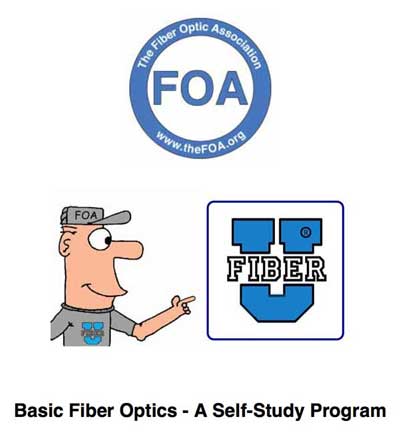Lesson 1. Basics of Fiber Optics
FOA Reference Guide To Fiber Optics
And Study Guide To FOA Certification

Answers To Chapter Questions
Chapter 1 Quiz-Basic
TRUE/FALSE
1. ANS: T
Since
most OSP installs are longer links, SM is the fiber of choice. Some
utilities and municipal networks can use MM fiber, but it's less common.
2. ANS: T
Most premises cables are simple single cable runs, terminated on each end.
3. ANS: T
The
greater bandwidth and lower attenuation of fiber allows it to carry
more signals further without regeneration, making it considerably less
expensive.
4. ANS: F
Most fiber systems and test equipment use infrared light which is invisible to the human eye.
5. ANS: T
Most airborne dirt is hard enough to scratch the ends of fibers in physical-contact connectors.
MULTIPLE CHOICE
6. ANS: D
All these types of installations are possible in the OSP.
7. ANS: C
Moisture is a problem in all OSP cables.
8. ANS: A
Armoring can stop rodents from harming cables.
9. ANS: B
Fusion splicing is the most reliable method of joining cables.
10. ANS: C
Backbones often use both fiber types - MM to carry today's traffic and SM for future expansion.
11. ANS: D
Any cable installed indoors must be rated for fire retardance to meet electrical and building codes.
12. ANS: A
The biggest danger in fiber installs is getting fiber scraps in your eyes.
13. ANS: B
You
should consult Material Safety Data Sheets for all chemicals (solvents,
cleaners, adhesives, etc.) used in fiber installations.
14. ANS: D
Dust caps protect the ends of the connector ferrules from damage and protect them from contamination.
- Next: Lesson 2: Fiber Optic Jargon - The Language of Fiber Optics
Return to Lesson Plan
|

